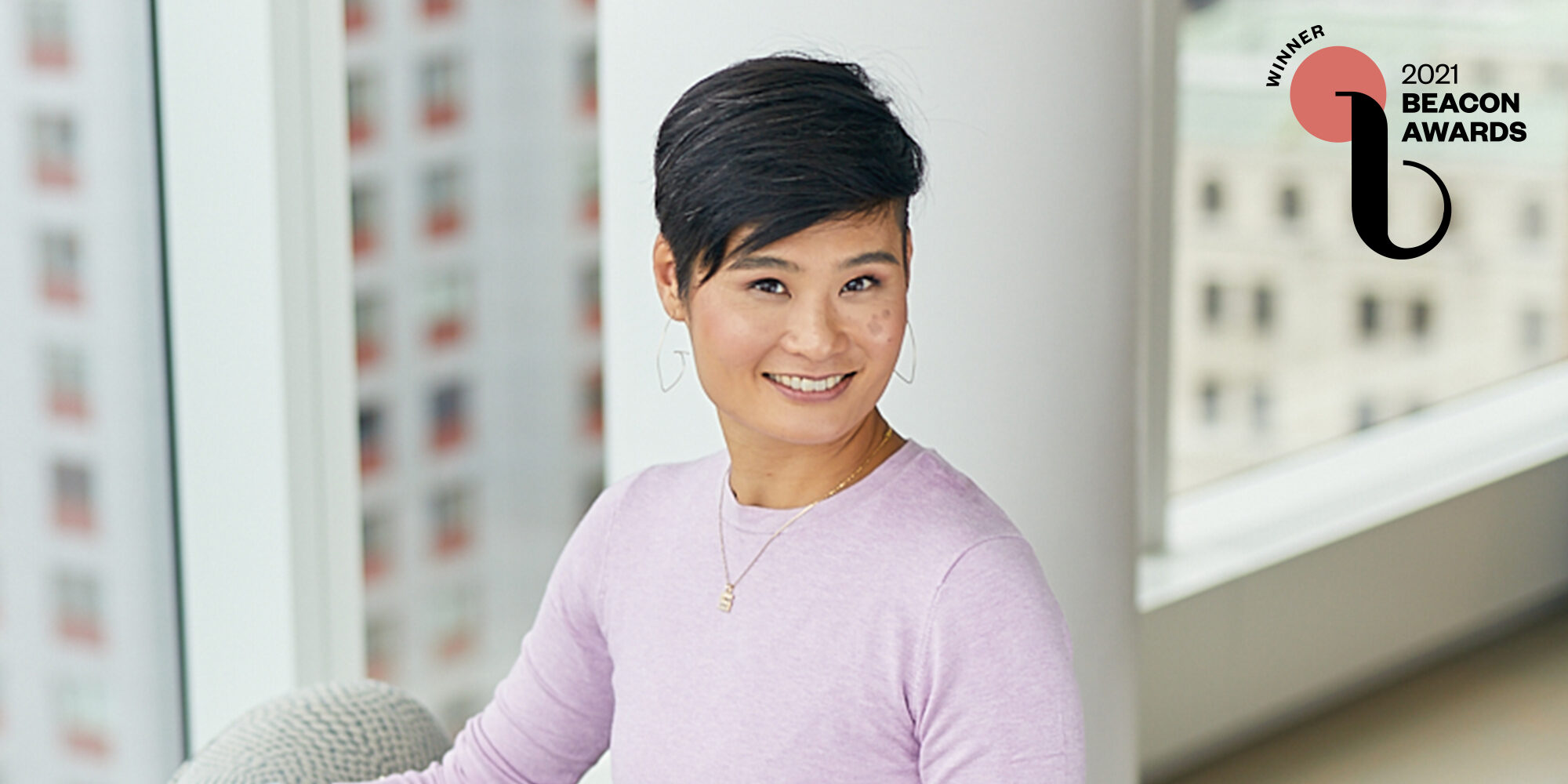
How Asutra Is Making It At Target, CVS And More Without External Funding
What if self-care was as simple as a few spritzes of aromatherapy mist or quick rubs of body lotion? That’s the message CEO and owner Stephanie Morimoto, Beacon Award winner for 2021 Entrepreneur of the Year, is trying to send with Asutra, the wellness and beauty brand selling natural pain relief, sleep support and skincare products for people who don’t necessarily have copious leisure time or budgets. “It’s really about small, actionable steps you can take to sleep a little longer or better or to wake up a little bit more energized in the morning or to reset your mood in the middle of the day,” she says.
Asutra is putting its accessible self-care solutions—most fall within the $12.99 to $34.99 price range—in accessible places online and offline. The brand is available at Amazon, Target, CVS, Thrive Market, Grove Collaborative and more. Industry sources told Women’s Wear Daily it exceeded $4 million in net sales last year. This year, its sales are expected to increase 10% to 20%. Morimoto isn’t looking to balloon Asutra’s business. Rather, manageable growth is a huge priority for her. Beauty Independent talked to her about what that means to her, winning retail strategies, assortment expansion, adjusting to the Apple iOS 14 update and why self-care shouldn’t be onerous.
Prior to taking over Asutra, you taught in Japan, worked at McKinsey and were on the business side at education nonprofits. What made you want to run a wellness brand?
I had gotten a little burnt out and decided to go back to my entrepreneurial roots. My grandfather on my dad’s side and my grandmother on my mom’s side had both been entrepreneurs. I thought, “I would love to buy a brand and take it to the next level.” So, that’s what I set out to do.
I had actually been using Asutra’s yoga mat cleaner, which was the first product the brand launched, and I had discovered they had other products like body scrub and pain cream. I had those in my medicine cabinet as well. Two brothers and their wives started the brand in their garage. They are serial entrepreneurs. They were excited to sell the business and move on to their next one, and they liked the idea of selling it to a user of the products.
I did due diligence on the business and saw a great catalog of products and customer reviews. I also saw the opportunity to reinvent the brand into a real brand and diversify the revenue. When I bought the brand in 2018, 99% of sales were on Amazon. I knew that, if I were to grow the brand, we had to diversify.
What was the brand like when you bought it?
It was very different. There was this very yoga feel to it because the original product line was yoga mat cleaning sprays. There was a totally different color palette and logo. The logo was a lotus flower with someone doing yoga on top of it. The founders were focused on optimizing for Amazon, but there wasn’t a clear mission or story for the brand.
When I thought about my own passion, I felt there was an opportunity to help people think about, how do I take care of myself well, and what does self-care with intention look like? We did a lot of brand strategy work to understand what shoppers wanted and how we could communicate a story and mission that made sense to them. That’s where the idea of Asutra as active, accessible self-care was born.
How did you start to diversify the distribution?
I bought the brand in 2018. We did the brand work that year and relaunched the brand in early 2019. In 2019, we got our first big mass retail opportunity with CVS. They actually reached out to us. They were looking to create a wellness set within their stores, and they brought in emerging brands. I think they probably saw we were selling well on Amazon. They gave us a shot at 400 stores, where we offered our top-selling magnesium spray and two of our essential oil sprays, one for sleep and one for stress relief. It was three of our entry level-priced SKUs.
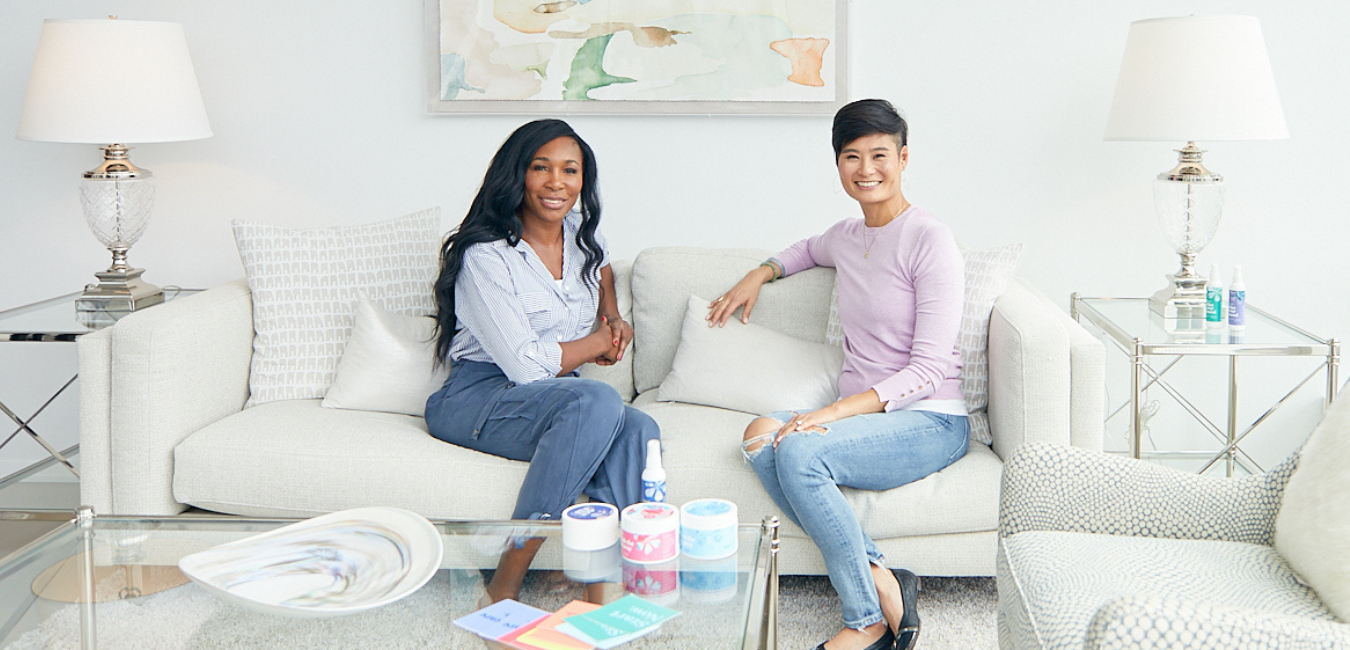
What was the CVS experience like for you?
I remember calling people that had gone through it already and asking them everything about the cost to what we could negotiate on marketing co-op and payment terms. We probably got better payment and marketing co-op terms than we otherwise would have because I asked for the moon, and we kind of got it, which was great. I think because it was an innovation set they were willing to work with us. Some retailers are more willing to negotiate than others. We grew from a 400-store test to 4,000 stores.
We launched in Target in the spring of 2021 in all 1,900 stores. Our strategy for retail distribution has been do mass with CVS and Target, and otherwise focus on smaller, natural channels, so regional natural grocery store chains. We recently launched on Grove Collaborative, which was been incredible for us, and Thrive Market. We’ve gone from 99% Amazon to more like 40% retail, 50% Amazon and 10% on our site.
What role does Amazon play in Asutra’s distribution now?
We are still a smaller, emerging brand. We want to be as available as possible wherever people want to shop. There’s a lot of talk about being omnichannel, and that’s our view. Target has been critical in terms of growth in sales and also growth in awareness, but Amazon is really key, too. Often, when people are shopping in the store, they might look it up on Amazon if they have never heard of it to see the reviews. We are lucky to have over 15,000 five-star reviews. So, it’s a real stamp of credibility.
Amazon is also a great way to test new things. We can test bundles or a new scent or color. And there’s just a chunk of people who always want to buy on Amazon versus anywhere else, and we want to make it easy for them.
How have you approached growing the selection?
The thing really set us apart from a lot of other brands focused on pain relief and wellness was our topical magnesium products. When I bought Asutra, our Magnesium Oil Spray was our top seller, and it remains our top seller. Because it was so popular, we looked at other formats for delivering magnesium topically and providing functional benefits.
We now have a whole line of magnesium products, not just the original spray form, but also lotions and soaks. The product family has definitely grown a lot. The other area we have focused on is sleep aids. Everybody is stressed out and having trouble sleeping. We had a few items for sleep, but we really built out a collection.
In Target, we have our Magnesium Oil Spray and Magnesium Body Butter, a newer product, and, in the sleep aids, we have a weighted silk sleep mask filled with lavender and flax seed. Then, we have a lavender sleep spray called Mist Your Mood. We have a little sleep trial set with minis so you can try out the products. When we look at those product categories, we see significant growth year-over-year.
What opportunities do you see with merchandise?
It’s really about continuing to innovate on the sleep and magnesium fronts. One new item we will be adding to Target next spring is a melatonin and magnesium lotion for sleep support. It’s called Dream The Night Away. It’s a very moisturizing lotion that helps you wind down before bed.
On our site, interestingly, our skincare does really well. We haven’t focused on it for retail distribution, but we have a trio of anti-aging serums—Retinol 2.5% Anti-Aging Serum, Hyaluronic Acid Anti-Aging Serum and Vitamin C Anti-Aging Serum—that are extremely popular. They are very well-priced. They are only $14.99 per serum or you can get three for $35. We are looking at doing additional vegan, PETA-certified skincare products that have good ingredients that are also very affordable.
What was it like to get investment from Venus Williams?
She’s not an investor. She is a part owner, but she basically has sweat equity. She is our chief brand officer, and she earns ownership as she helps us meet certain milestones as a result of her work with us. Her main responsibilities are doing press interviews and posting on social media, serving as a spokesperson for us.
We were not planning to have a celebrity partnership, but, in late 2018, right after I had bought the brand, we got a cold call from her team. They wanted to learn more about the brand. They didn’t say who they were calling on behalf of at first. I gave them the whole story, and they loved the focus on active, accessible self-care and that it was woman-owned. I asked, “How did you find out about Asutra?” The response was, “You probably won’t believe this, but Venus uses the pain relief cream and wanted to learn more about the brand.”
We kept talking, and she eventually said, “Let’s meet.” We met with her right before the US Open, which, apparently, she never does. We presented the brand to her and our goals. She got really excited and said, “I’d like to help you accomplish all your goals.” She joined in the spring of 2019 and has really been an amazing partner ever since.
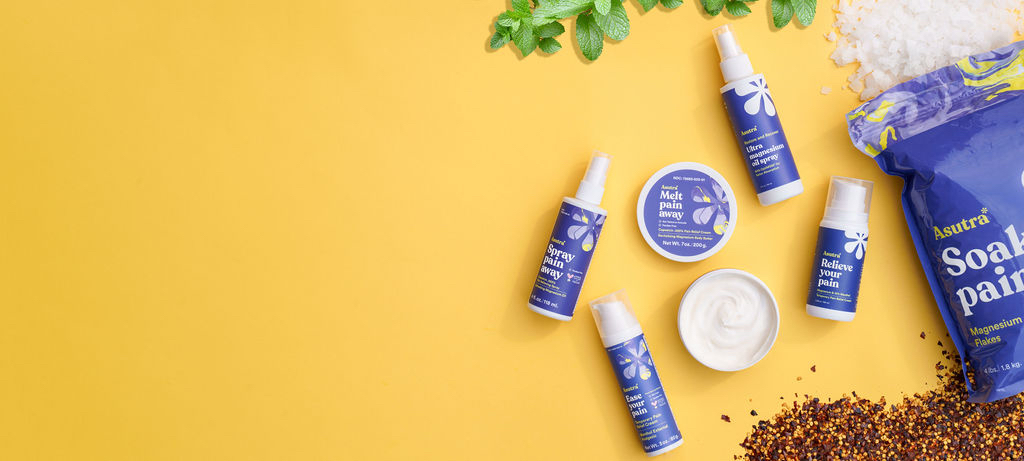
Would you ever have another celebrity partnership?
I think if it was organic. What was so great about Venus joining us is she had been using the products and knew about them, and what we were doing was very much up her alley. She loves skincare, natural products and things that enhance her recovery as an athlete. She’s also an entrepreneur, so she can provide helpful advice from her experiences. If someone else like that connected with us and it made sense, it’s totally possible.
You have bootstrapped the brand. What does it take to do that?
This is cliché now, but cash is king. It’s about really figuring out your cash flow and how to manage that as well as the right metrics that will help you drive profitability by channel. Amazon is a very different beast from retail in terms of the costs and the investments you need to make in marketing to drive the business. We have a great accountant and financial analyst to understand the fixed and variable costs by channel, and what you have to do by channel to support growth and also what are the costs that we can reduce to ensure profitability.
I’m really trying to get to the business to a place where we can sustainably grow and not take outside investment. The one instance that we would is if we just had a massive opportunity to grow much more in Target or another mass retailer where we would need both a lot of cash and a lot of expertise.
What’s been crucial to your success at retail?
Our big goal when we did the rebrand was to get into Target. That’s what we were doing the brand work for. We felt our mission, price points and products would be perfect for the Target guest. We started with Target online and, then, got into the stores. We are in the pain/sleep aisle not in beauty because we provide our hero ingredient of magnesium and have the focus on functional benefits.
We really did our homework. I called everybody I knew that had launched in Target. People were really generous, and I synthesized everything I heard from them plus conversations with the buyer to come up with a plan for marketing before, at and after launch. We made sure the whole team was aligned around it, and it was all hands on deck.
We engaged more experts as we went along. One of the brand founders who used to be at Target said you have to talk to this agency called Digits, they are the ones that built Target e-commerce, and now they have their own agency. We started small with them and have recently had more engagement with them. They have been awesome. They help with everything, from improving our listing to online promotions to third-party media and advertising campaigns.
I would say that it’s important to understand what motivates the shopper in each channel. We have a holistic plan to drive people to Target. At Grove Collaborative, our sell-through has been much higher than I thought it was going to be, and the shopper is less price-sensitive. They really want to understand the brand, how eco-friendly it is and how to use the products. They gave us good advice on two promotional events to do and, otherwise, it’s about featuring us on their app and having videos of Venus on how to use the product.
What does self-care mean to consumers and is that changing?
I had a fascinating conversation with someone at Ulta a couple of weeks ago. He was saying that sometimes self-care feels like such an elevated concept, and it feels time-consuming like you have to have the perfect bath with flower petals and candles lit, and it’s going to take an hour and a half. Who has time for that? It doesn’t have to be that, that’s what we are trying to convey at Asutra. You can do a nice bath in 10 to 15 minutes and, if you don’t have time for that, you can do a quick foot soak.
Self-care has been this huge buzzword, but I don’t think we have always been clear about it. It’s like it grew as a buzzword, and everything became self-care, and it began to feel like something you couldn’t do. We are trying to say you can do it, and it doesn’t have to be massive. If you are a woman and trying to be your best, you really do have to make some time for yourself. It’s been hard and people are stressed during the pandemic, but one thing I really hope is that they are trying to find ways to take care of themselves.
Where do you see the wellness category headed?
Even though people are really stressed out and struggling with sleep, the pandemic did also make people recognize that they have to take care of themselves better. So, I think people are seeking more things to relieve stress, get a better night sleep and help with immunity. One trend we are seeing is that people don’t want to take medications or a pill. They want alternatives that are healthier, and they can use every day and not worry about. That’s what our Target buyer saw in Asutra. She was like, “Look, not everybody wants to pop a pill.” There’s more openness to alternatives to Advil or NyQuil.
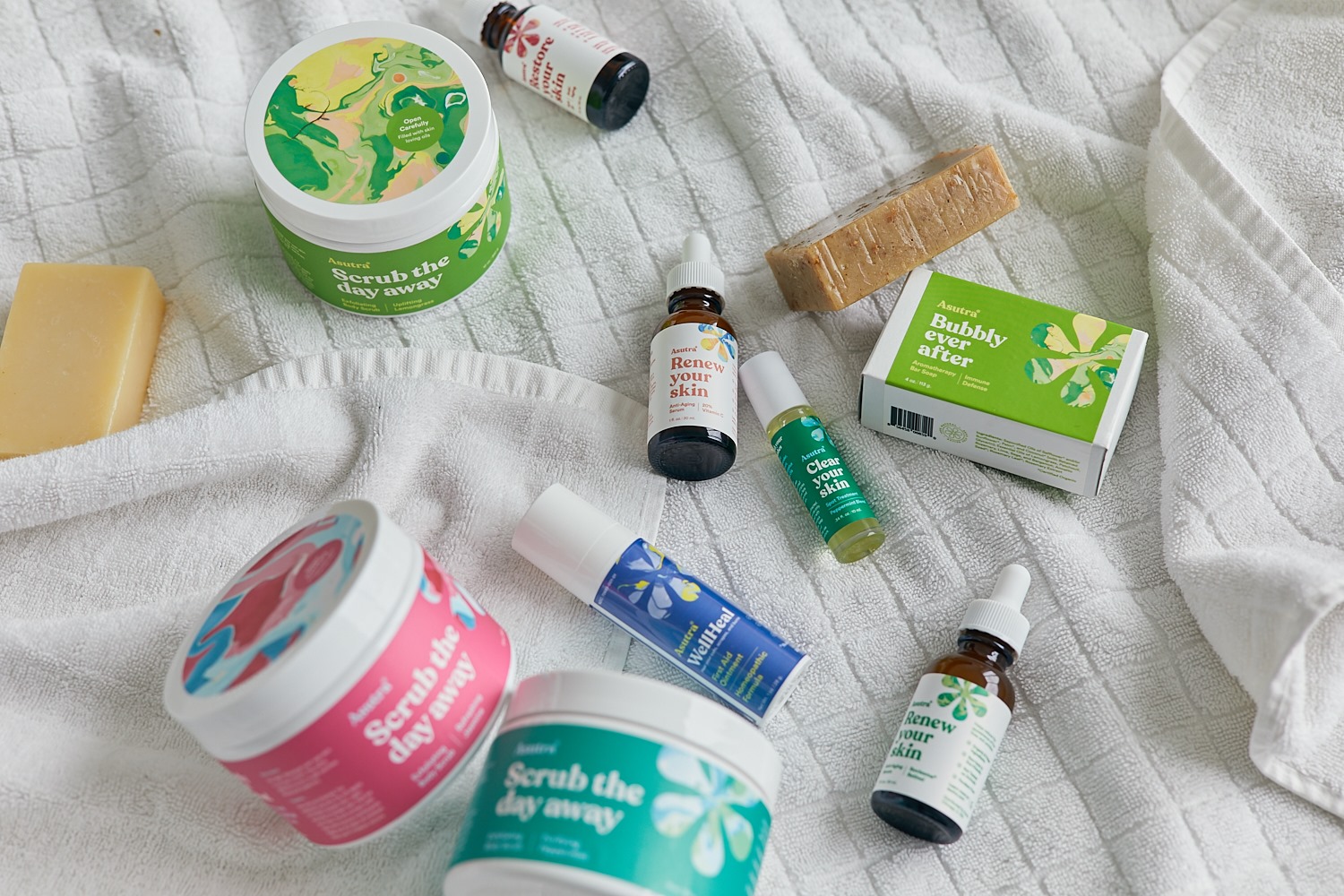
How have you responded to the Apple iOS 14 update?
It’s not been easy. It basically threw all of our data off-track. It made seeing what our return is extremely difficult. We just decided to pause our Facebook ads to our site because we couldn’t tell if they were working. Instead, we are focusing more on our email list, which has always been really good for us. We are paying even more attention to how we are segmenting emails, and we are looking into more ways to connect with our customers directly.
One thing we are planning for next year is actually reaching out to our top customers and forming an advisory. We will meet with them virtually on a regular basis and ask their advice and input on product development and how we can reach more people like them. We do a lot of consumer surveys post-purchase already to understand how people found us, what they like about the products and how they use them.
What are short- and long-term goals for Asutra?
We want to continue making Target a success. We are really excited for how it has gone the first year. Target will add two more items to our assortment next year. We will also continue to work on the natural channels we launched this year to make those successful.
Longer term, it is really about sustainable growth. A reason we haven’t raised outside capital is we don’t want to be accountable to the unrealistic growth goals of venture capital. We want to figure out what is the right flywheel to grow in a sustainable way. We want to reach as many people as we can who are looking for natural solutions to pain relief and sleep, but we want to make sure that we are reaching the right group of people to have a really strong, repeatable customer base.
What does it mean to you to grow in a sustainable way?
A lot of new and emerging beauty and wellness brands probably raised a lot of money to grow awareness and also to grow customers. I think time will tell if those customers will be strong, repeatable customers or if they are customers who are acquired and don’t come back. For us, it’s about reaching as many people as want a solution like Astura as we can with our budget and offering them something that makes them want to come back.
So far, that’s definitely the case on Amazon and our site. We believe that’s the case at Target, but it’s a little new, and we have to give that time. It’s not a particular growth rate we are looking for, it’s more about seeing metrics that tell us, yes, we are seeing customers come back time and time again, and we are seeing them share Asutra with their networks.

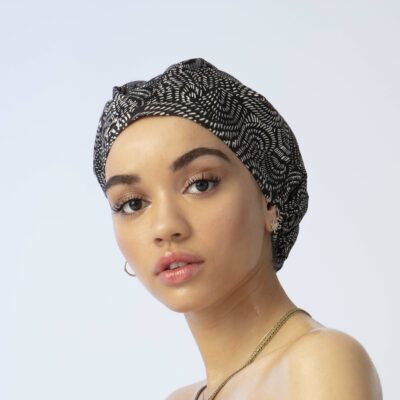
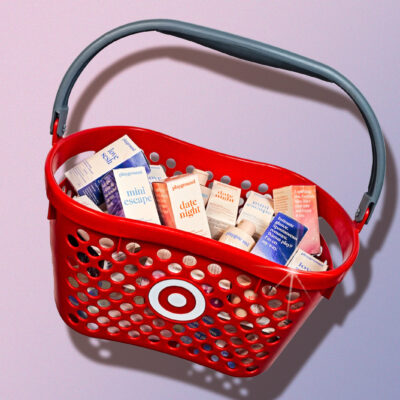


Leave a Reply
You must be logged in to post a comment.